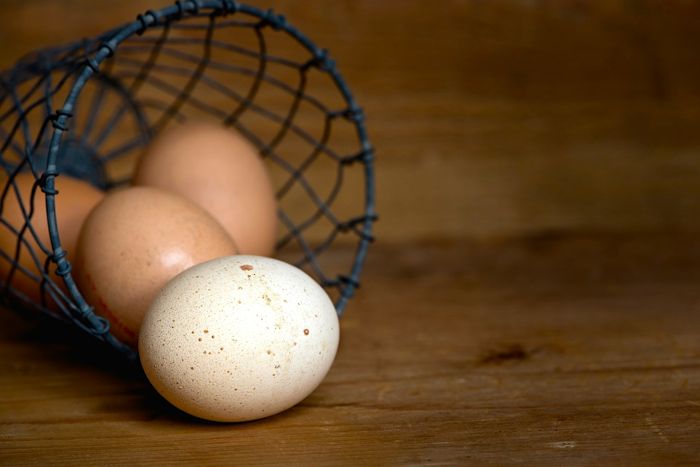Organic eggs have been on the market for awhile, but how can you tell which are the healthiest for you and your family?
Eggs are a great source of nutrition for writers. They’re high in protein, low in calories, and unlike previously believed, will not raise your cholesterol levels.
But when it comes to actually choosing the eggs you’re going to take home, it can be tough to decide. You’ve probably seen those horrible pictures of chickens packed into cages for most of their lives.
“Chickens are housed in giant, overcrowded sheds,” states Free From Harm “where they are packed in by the thousands and forced to stand and sit on filthy, manure-laden flooring, which is typically cleaned out only every 2 to 4 years.”
As awareness of these practices increased, consumers demanded better for their fine-feathered friends. The market responded with new organic, free-range, and even omega-3 enhanced eggs. There are so many options now in addition to the standard conventional eggs, it can be confusing to know which is best.
What Does it Mean When It Says “Organic” Eggs?
Let’s talk about some of the terms used in marketing eggs. First, “organic.” If the carton has the USDA certified organic seal on it, it means that the eggs have met the minimum national standards for organic production. In other words, the hens were fed a 100-percent organic diet, received no antibiotics, and had living conditions that allowed them to engage in natural behaviors, such as going outdoors.
It doesn’t mean, however, that the hens are living the idealistic lifestyle we may imagine. Some organic eggs do come from small farms where chickens get to scratch around outside, but most come from factory-sized buildings where large flocks are confined in crowded, indoor spaces.
The standards don’t require the hens actually go outside, only that they have access to the outdoors. And the “outdoors” can be a tiny screened-in concrete area. Or it could be that there are only a few small doors granting access to the outside that most of the hens can’t even get to.
To help you out, The Cornucopia Institute offers a scorecard that rates over 150 egg producers on a scale of one to five. The ratings are based on how the hens are cared for and how the eggs are produced, including the size of the flocks, the size of the indoor and outdoor spaces, and types of indoor “enrichment” that’s offered, such as scratching areas.
What About the Other Terms Like Free Range?
When looking at anything other than a USDA label, you can take the marketing terms with a grain of salt. “Free-range” means that the hens have access to the outdoors, but remember—just because they have access doesn’t mean they get to actually go out and scratch around. It most certainly does not mean that they get to run around “free.”
“Cage-free” is a little less flattering, and means only that the hens can roam around inside a building instead of only inside a cage. It doesn’t mean they can go outside, and it doesn’t specify how large the roaming area has to be.
“Omega-3 enriched” means the eggs were laid by hens who were fed a diet rich in omega-3 fatty acids, which are believed to have a number of health benefits, including reducing inflammation.
“Vegetarian-fed” means the chickens were fed no meat products, but this is controversial as chickens are not naturally vegetarians.
Other verbiage and labels may sound good, but they don’t mean a lot. To make sure you’re getting the best eggs you can get, choose organic—it’s the only label that really means anything significant—and then test your eggs with the following two tests recommended by “Organic Lifestyle Magazine:”
- Crack the egg. If the shell is brittle and has little to no membrane inside, it signifies a chicken that’s low on vitamin D and not getting enough exposure to the sun.
- Look at the color of the yolk. A deep orange color signals a higher level of vitamin A, and indicates the bird had access to a varied diet. A pale yellow color indicates low vitamin A, and a diet consisting of mostly white corn.
How do you find healthy eggs?

